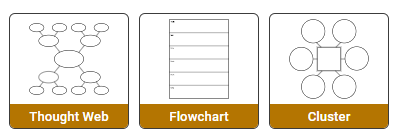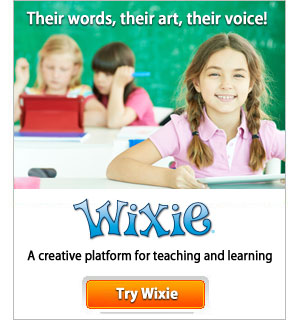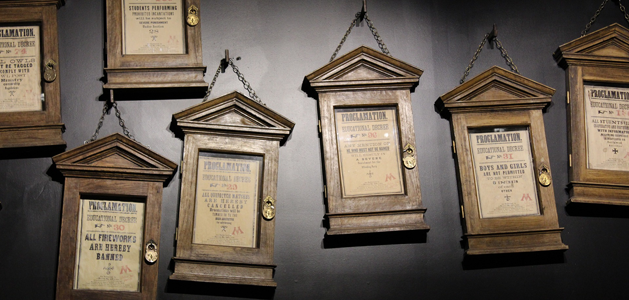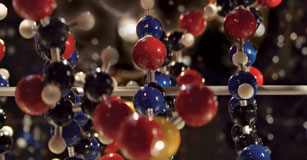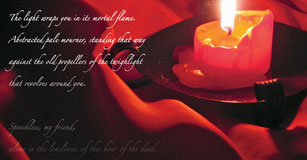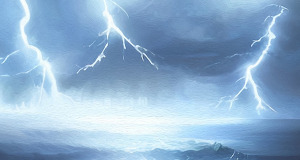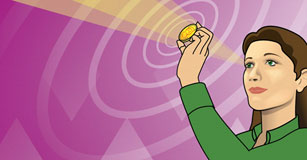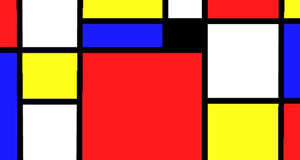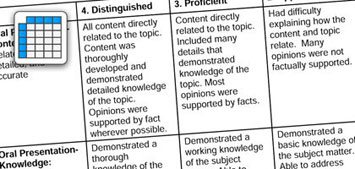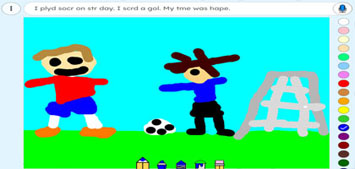Shapes Show It
Students create visual statements using shapes and color to express and evoke specific emotions.
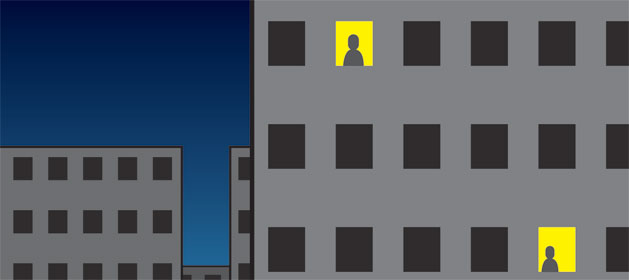
Task
The elements of art - composition, shape, line, form, value, texture, and color – provide building blocks on which to explore existing artwork and to create your own. In this project, you will explore how to use shape and color to set the mood and make your work express specific emotions. Once you have learned about the techniques for using colors and shapes to convey meaning, you will retell one of the Twelve Labors of Hercules using shapes and colors in a creativity tool like Wixie.
Engage
Show students an image of Paul Klee’s “Red Balloon.” Ask students to identify what shapes they see. Can they visualize the scene the artist was attempting to depict? How does the round red shape in the middle make them think of a balloon?
Next, share Molly Bang’s Picture This with your students, following her process of developing a simple illustration for Red Riding Hood. The protagonist in her version is a red triangle. Why did she choose this shape? How does a triangle make her feel? Do you agree? Are the sides equal? Why is the triangle shaped this way? Would a triangle of any shape make you feel the same way?
Next, explore Bang’s list of the principles that make pictures successful in conveying meaning. The principles explore how different shapes (horizontal, vertical, and diagonal) convey different meanings, how position on a page can attract viewers or make them feel a certain way, how color affects mood, how size affects strength, and how contrast makes us see.
Use one of Molly Bang’s discussions about color as an introduction to using color to affect emotion. Explore a few of the many great web sites that talk about how colors affect our feelings. Interior designers use color to change our perceptions about the size of a room or to reflect or enhance the types of activities that take place in a room. Invite an interior designer, or graphic designer, to your class to discussion how color contributes to mood and activity.
Create
Let students know that they will use shapes to create an animation that retells one of the Twelve Labors of Hercules. Heroic characteristics like bravery, strength, wisdom, common sense, and perseverance provide direction for how shapes should make the viewer feel. The action and setting associated with the journey also evoke strong emotions. The intention is not to use shapes to build a realistic illustration, but to use shape and color to evoke emotions in the viewer that are central to the character of the hero and the events in the heroic journey.
Assign each student one of the Twelve Labors of Hercules, such as slaying the Nemean Lion, capturing the Golden Stag of Artemis, or cleaning the Augean stables. Provide them with multiple versions of the Twelve Labors. Have students use a cluster diagram or character trait organizer to brainstorm additional adjectives and descriptions as they develop their own narrative version of one of the Twelve Labors of Hercules’.
Have students use geometric shapes, on paper or using a digital tool, like Wixie, to illustrate a crucial scene in their assigned labor. Have students use their cluster or character trait organizers as they develop the details. Work to ensure that students only use simple shapes.
When students have finished creating thieir image, have them share their work with a peer, conducting a peer review of the use of shape and color in the scene.
Ask students to use a digital animation tool or stop-motion process to transforming the still scene into an animation. Have students narrate the story and export an animated video of their work.
Share
Arrange the student videos in the order of the Labors of Hercules. Showcase the videos from each of the Labors, commenting on each student’s interpretations and use of shape and color.
Collect student work on a web site or video sharing account for a visual retelling of the Twelve Labors of Hercules. Share this with a class studying mythology and heroes. Have students in this class evaluate the use of color and shape in your students’ videos.
Assessment
The initial discussion of Paul Klee’s work will help you establish prior knowledge. As you explore the story of Little Red Riding Hood, listen to students’ responses to your questions about Molly Bang’s use of shape and color.
The final animation should be a clear assessment of how well the student understands and employs the use of color and shape to evoke emotions.
Resources
Bang, Molly. Picture This: How Pictures Work ISBN: 0613300912
Artist’s Toolkit https://www.artsconnected.org/toolkit/index.html
Meaning of Color https://www.color-wheel-pro.com/color-meaning.html
Twelve Labors of Hercules (Herakles) https://www.perseus.tufts.edu/Herakles/labors.html
Common Core Anchor Standards for English Language Arts - Grade 6-10
Reading Standards
Craft and Structure
4. Interpret words and phrases as they are used in a text, including determining technical, connotative, and figurative meanings, and analyze how specific word choices shape meaning or tone.
Writing Standards
Production and Distribution of Writing
6. Use technology, including the Internet, to produce and publish writing and to interact and collaborate with others.
National Core Arts Standards:
Creating
1. Generate and conceptualize artistic ideas and work.
2. Organize and develop artistic ideas and work.
3. Refine and complete artistic work.
Performing/Presenting/Producing
5. Develop and refine artistic techniques and work for presentation.
Responding
7. Perceive and analyze artistic work.
9. Apply criteria to evaluate artistic work.
Connecting
10. Synthesize and relate knowledge and personal experiences to make art.
ISTE NETS for Students 2016:
6. Creative Communicator
Students communicate clearly and express themselves creatively for a variety of purposes using the platforms, tools, styles, formats and digital media appropriate to their goals. Students:
a. choose the appropriate platforms and tools for meeting the desired objectives of their creation or communication.
b. create original works or responsibly repurpose or remix digital resources into new creations.
c. communicate complex ideas clearly and effectively by creating or using a variety of digital objects such as visualizations, models or simulations.
d. publish or present content that customizes the message and medium for their intended audiences.


